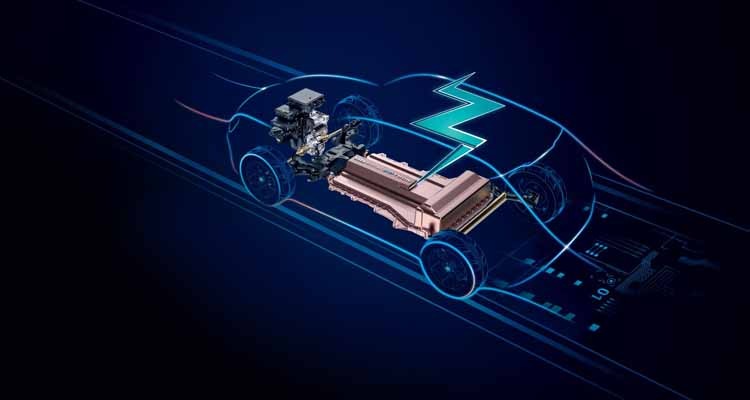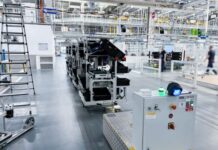The Global Automotive Powertrain Market is poised to grow strong during the forecast period 2017 to 2027. Some of the prominent trends that the market witnessing the stringent emission norms, increasing integration of engine and increasing in integrating engine management sensors. Self-driving vehicles and full electrification are major disruptors for the auto sector in the next decade. But for the next several years the industry is likely to be dominated by radical changes occurring WITHIN the internal combustion (IC)-engined automotive model, as new engine management and optimization technologies and partial electrification address changes demanded by regulators and markets, such as achieving carbon emission reductions and fuel economy gains despite the sidelining of diesels.
Both evolutionary and disruptive technologies are likely to be successful. Intelligent Electrification is a key approach to enable more radical ICE technology. Mechanical Hybrids could offer substantial cost reductions over electric systems. HEVs and EVs are gaining popularity as alternative powertrains while environmental regulations continue to become more stringent on gasoline and diesel motors with the upcoming Euro 6/VI regulation.
Countries Constructing the Future of Automotive Powertrain
In China, the internal-combustion engine accounts for over 99 % of vehicle power technology, and over 99 % passenger cars and 73 % commercial vehicles are powered by gasoline and diesel engines, respectively; the diesel-powered passenger cars are mainly SUVs and gasoline commercial vehicles mainly consist of mini-trucks, light trucks, and buses. The vehicle’s power system is in the initial stage of electrification, but over 50 % of two-wheeled motor are electrified. There is an upward tendency in gasoline and diesel consumption from Chinese vehicles, but the increase in gasoline consumption is lower than with diesel; vehicles consumed 85 % gasoline and 40 % diesel. There is a bottleneck in the development of diesel-powered passenger car, that is, the poor diesel quality. Start-stop and ISG technologies can make 5–12 % and 20 % reductions in fuel consumption, respectively, and meet regulations of Chinese phase III fuel economy level. HEV technology is more widely used in commercial vehicles than in passenger cars in China.
E-mobility is at a tipping point. Stronger carbon-dioxide (CO2) regulations, consumer preferences increasingly leaning toward clean-transport solutions, declining battery costs, and infrastructure-rollout acceleration will lead to faster distribution of electric vehicles (EVs) throughout major markets in the early 2020s.
The mix of powertrain technologies underlies several forces and will vary by region. Regulation, technology, infrastructure, total cost of ownership (TCO), and consumer preferences will be the drivers of the speed of adoption of alternative powertrains over the next five to ten years. These forces vary strongly by region and so will the mix of EVs, hybrid vehicles, and later, fuel-cell electric vehicles.
Powertrain content will see dramatic change. The diversity of powertrain types is leading to a significant change in the powertrain content per vehicle over time—in quantity, technology, and share of vehicle value. Suppliers need to understand these changes to be able to identify relevant pockets of growth (in electrification) and stagnating or declining component markets (in ICE).
Suppliers are refining their strategies in response to a shifting component market. Many suppliers are taking a careful look at their existing competencies, the markets they are active in, their long-standing customer relationships, new mobility players, and individual ambitions to reshape their portfolio strategies.
In order to help suppliers to successfully navigate the powertrain transition, we offer a four-step approach that can guide them regardless of their starting points, aspirations, or player-specific value pools.
Regulation
CO2 regulations in all major regions but the US are becoming more rigorous, thereby accelerating the shift from ICEs to EVs. Europe is leading the way with an emission limit of 95 grams per kilometer (g/km) in 2020, and further reduction of 37.5 percent by 2030, resulting in a limit of 59 g/km. To meet the CO2 target in Europe and avoid penalties, OEMs will have to sell 2.2 million EVs (assuming 50 percent PHEVs and 50 percent BEVs) in 2021. In 2018, EV sales in Europe amounted to 0.2 million. In comparison, China’s regulation targets are set at 117 g/km and 93 g/km, and North America’s current targets are set at over 50 mpg following passenger-vehicle Corporate Average Fuel Economy (CAFE) standards (equivalent to 99 g/km) for 2025 . In addition, further emission regulations (for instance, nitrogen oxide [NOx], particulates), access regulations (such as local diesel bans or license-plate regulations), and potential ICE bans will influence adoption on a regional and city level. Globally, several countries have announced targeted end dates for ICEs (for example, Norway plans to phase them out by 2025; Denmark, India, and Israel by 2030; and Canada, China, and the United Kingdom by 2040).
Technology
Innovation in battery technology and production have made EVs competitive with conventional combustion-engine vehicles. Batteries constitute a major cost item in BEVs, and their cost has decreased significantly because of technology advancement, production-process optimization, and economies of scale. Since 2010, the cost in dollars per kilowatt-hour (kWh) has dropped by approximately 85 percent, thereby opening the market for EVs further. In 2019, battery-pack costs came down to approximately $178 per kWh on average and $157 per kWh for best in class. Accordingly, cell costs were at approximately $134 per kWh on average and $115 per kWh for best in class. A further cost reduction, down to $100 per kWh, is expected as chemistries are optimized and once large battery factories begin producing at high yield and full utilization. With cell prices expected to reach a $100 per kWh price level over the next five to seven years, C-segment and D-segment vehicles4 will reach TCO parity (depending on annual mileage), thus enabling mass-market penetration of EVs. Besides the cost of an EV, regional differences in subsidies, electricity versus fuel prices, taxes, and resale values will lead to different customer-adoption rates across regions.
The Scenario
he gasoline engine is the most common drive technology in the world. Modern gasoline engines are able to meet very stringent CO2 regulations, are cost-effective to manufacture and remain the primary choice for urban driving. Common-rail fuel-injection technology has dramatically improved the performance and efficiency of diesel engines. Consequently, public perception of diesel engines has changed, due to improved performance and fuel efficiency, reduced noise and lower smoke emissions. High-pressure injection systems and efficient exhaust-gas treatment modules will guarantee even more eco-friendly and fuel-efficient driving in the future. The gasoline direct injection (GDI) technology, with its potential 20% improvement in fuel savings, is expected to grow significantly in the coming years.
Consumer demand for mobility in emerging markets is leading the motorcycle manufacturers to move from mechanically to electronically controlled systems to meet stricter emissions regulations. In the west, the vehicle makers see engine downsizing as an opportunity to reduce CO2 levels significantly and to boost the fuel economy.
Hybrid vehicles combine an internal combustion engine and a battery-powered electric motor to power the drivetrain, improving fuel economy and reducing harmful emissions. In addition to the internal combustion engine control unit, other modules are required to control the electric traction motor, recharge the battery and manage the energy used to run the start/stop system, fuel and water pumps. The start/stop system is the first step in the vehicle electrification. Also referred to as micro-hybrid technology, this system turns the engine off when it would normally idle in neutral and restarts it instantly when the accelerator is pressed. This is a particularly effective system in urban “stop and go” driving conditions where fuel consumption and CO2 emissions can be improved by up to 15%.
Drivers of Automotive powertrain System Market
The significant increase in demand for passenger and commercial vehicles, and growth in global automotive industry boosts the demand for automotive powertrain system. The demand for automatic transmission has increased significantly, thereby supporting market growth. The growing trend of downsized engines further boosts the adoption. The introduction of stringent government regulations regarding carbon emissions has encouraged market players to launch efficient and eco-friendly automotive powertrain system. New emerging markets, emerging consumer demographics, and technological advancements would provide growth opportunities for Automotive Powertrain system market in the coming years.















